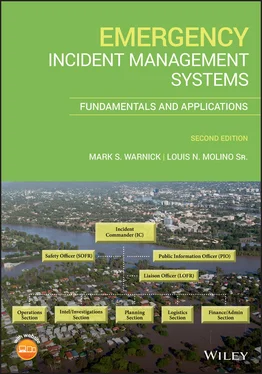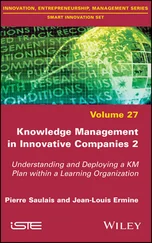July 4, 2019
Mark S. Warnick
There are so many people to acknowledge. First and foremost, I need to acknowledge my wife, Cleo, who has been a beacon of light when I felt as if I would never complete this book. When my head became bogged down with technical aspects, she was there to help me clear my head and get me back on track. She is the love of my life, and she helped me to actually finish this book through her gentle and kind encouragement and her gentle nudges when I no longer felt like writing.
I also need to acknowledge my content editors Angie Bowen, Jim O'Neil, and Joe Campbell. These individuals were chosen because they have worked in the field for many years, and they were there for me to ensure that I did not miss anything. While I am sure there is something we missed (or that I got wrong), these individuals were gentle, honest, and encouraging!
Angela (Angie) Bowen has devoted 31 years to public safety and 28 years to emergency nursing. Angie is a nurse/paramedic with a background in rescue, EMS, and pediatric emergency/trauma/transport nursing. Angie currently utilizes her skills with the Radiation Emergency Assistance Center/Training Site (REAC/TS) and Jefferson County (TN) EMS. Her dedication to helping others is only surpassed by her hunger for more knowledge so that she can help more people. She was once a student of mine, but now I am proud to call her my friend!
Jim O'Neill and I have been thick as thieves for somewhere around 30 years. Jim has over 40 years, starting out as an E.M.T in Boston, MA, and then he eventually went into real work, firefighting (love ya Jim!). For 11 years, Jim served as a Fire Chief in Suwannee County, FL, and he was a darn good one! When Hurricane Katrina struck, he was one of the individuals who responded. He found that he loved it so much; he has spent 14 years with the US Department of Homeland Security/Federal Emergency Management Agency (FEMA). Presently, he is a Disaster Recovery Center manager with the Federal Emergency Management Agency. His dedication to helping others is amazing!
Joe Campbell currently works as a Boating Investigator for the Tennessee Wildlife Resources Agency. Joe has 28 years in public safety and has worked in law enforcement, firefighting, emergency management and is a Paramedic, most of them simultaneously. Essentially, he has worked in almost every major field that uses the Incident Command System (ICS) method. Joe has become a good friend, a confidant, and someone I can vent to, even if he does answer my phone calls with “What's up peckerhead?”. He too is a brother in arms, and I am thankful for him and for his help with this book.
I want to acknowledge my pastor, Thomas Black, and my church family at Fame Evangelical Church, whose prayers and encouragement helped me along the way. Their prayers of intercession were regularly felt, and they were answered.
Finally, I want to acknowledge my Lord and Savior Jesus Christ. If not for his love and guidance, I have no doubt that I would not be the person I am. Anyone who knows me will know that I am not perfect, but I am a work in progress, and I am forgiven. I readily acknowledge that Jesus died on the cross for my sins, and he cleansed me of my sins, even though I am still a sinner.
This book will likely be different from any book that you have read before. It intentionally goes outside of the norms, so that you can learn, and hopefully retain the information that is provided. Probably, the first thing you will notice is the acronym or shortened version of a title is not used just one time, and then the acronym is used throughout the rest of the book. These were left together throughout the book to help you remember both the title and the acronym. The only exceptions are the Incident Commands System (ICS), Incident Management Systems (IMS), Hospital Emergency Incident Systems (HEICS), and Hospital Incident Command Systems (HICS).
As you read through this book, the first two chapters are there to give a historical perspective and to show that the Incident Command System does work. The third chapter shows what incident management is used in various places around the world. Chapters 4– 16are in place to describe the methods and systems used throughout the United States, and in many instances, to some degree, around the world. Special consideration was given to the Incident Command System (ICS) and the Hospital Incident Command System (HICS).
As you go through this book, you will read about real‐life scenarios, and you will see analogies. You will see quizzes at the end of each chapter, and you will see resources that will guide you to more information on the topic of that chapter. More than anything, I hope that this book is presented in such a way that you can learn and retain this information. I am sure that I have made a mistake or two in this book, but the vast majority of it is correct. If you find mistakes, PLEASE let me know so they can be corrected in the next edition.
About the Companion Website
This book is accompanied by a companion website:
www.wiley.com/go/Warnick/EIMS_2e
Scan this QR code to visit the companion website.

The website includes:
Solution manual
Those who cannot remember the past are condemned to repeat it.
George Santayana
It has been said that necessity is the mother of all invention, and this holds especially true with incident management. Out of necessity, the creation of what we now call Incident Management Systemor IMSwas born so that first responders could be more effective in responding to every kind of incident that may occur. IMS methods have been modified to help manage nearly every type of emergency situation that can occur. Whether it is a disaster in a hospital, a traffic collision, an armed hostage situation, or a disaster that utilizes the military and various other federal government entities, IMS is a method that helps ensure everyone is on the same page and working together.
Unlike most creations, IMS is not a physical thing that can be concretely viewed, picked up, or even handled. These IMS systems are concepts. More accurately described, IMS methods are a set of philosophies, policies, and procedures that help the users (of the system) to control and manage chaotic emergencies. These IMS methods are also used to provide structure and safety measures during a planned event. When it is employed properly, it allows those managing an incident or an event to divide larger tasks into much smaller tasks and to assign individuals who will manage specific functions within the response or event. In essence, IMS methods are divide and conquer structures that help to ensure that no details are overlooked.
In the United States, there is an overarching IMS method that is known as the National Incident Management System (NIMS). The NIMS method will be explained more comprehensively in later chapters, but this system was essentially designed to prepare for, prevent, and manage the response and recovery to disaster (and emergency) situations. Utilizing NIMS increases the coordination among individuals who respond to disasters on the local, state, and federal levels. While an oversimplification, NIMS was designed to integrate every stakeholder into an organized system that is ready to respond. When resources are ordered by an Incident Commander (IC) utilizing NIMS, it ensures that they will more than likely get the exact resource they need, and that resource (including personnel) will be on the same page as the local government.
Читать дальше













